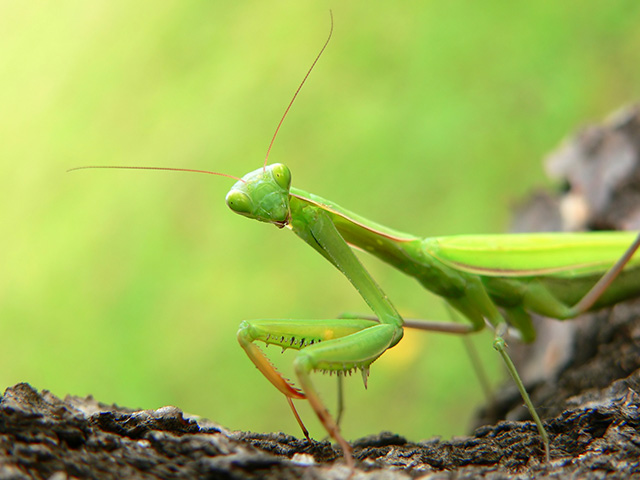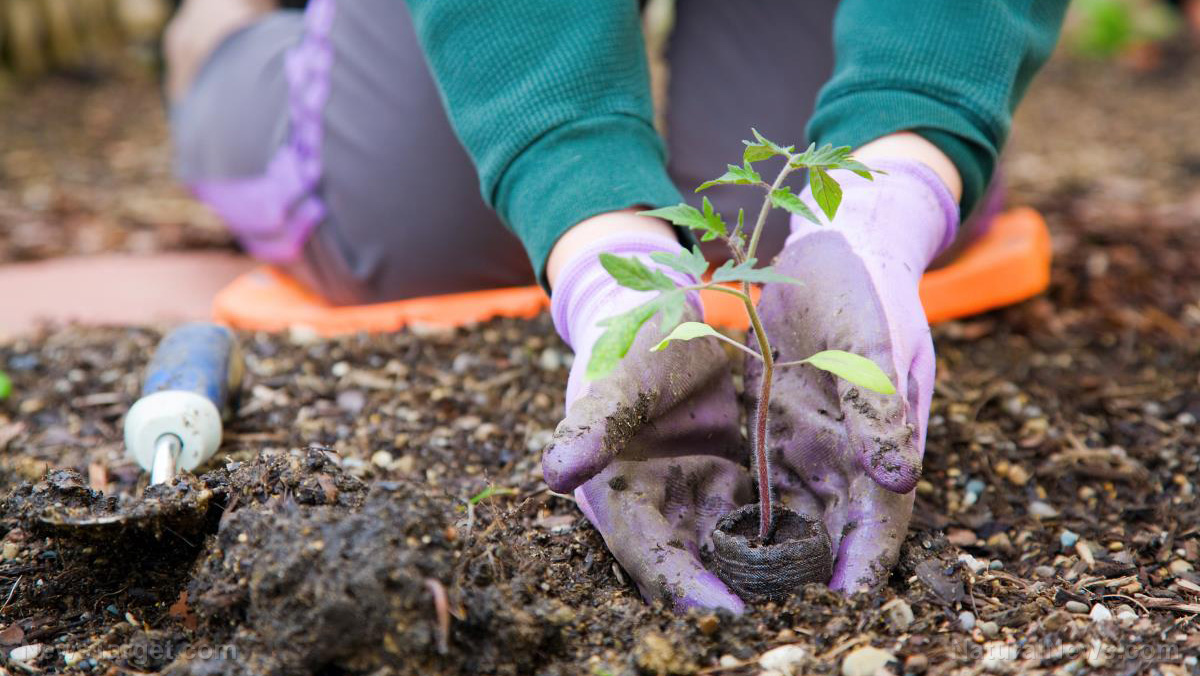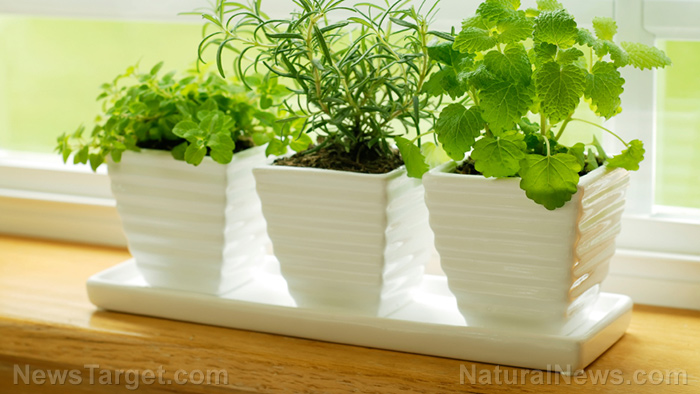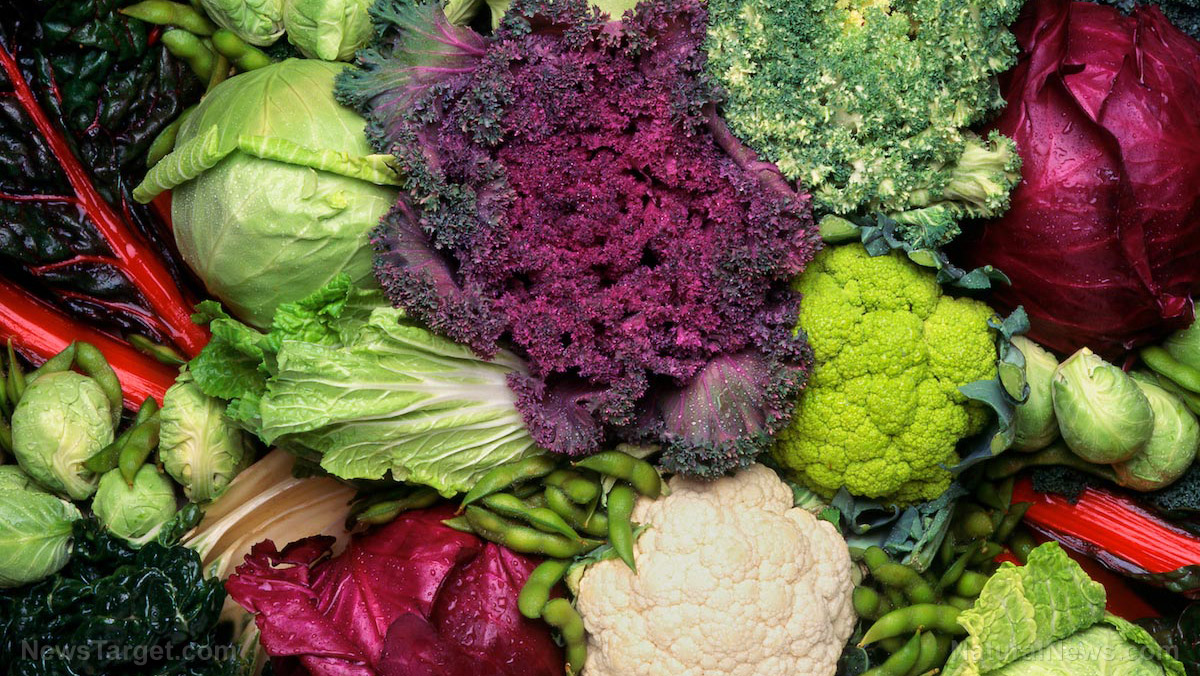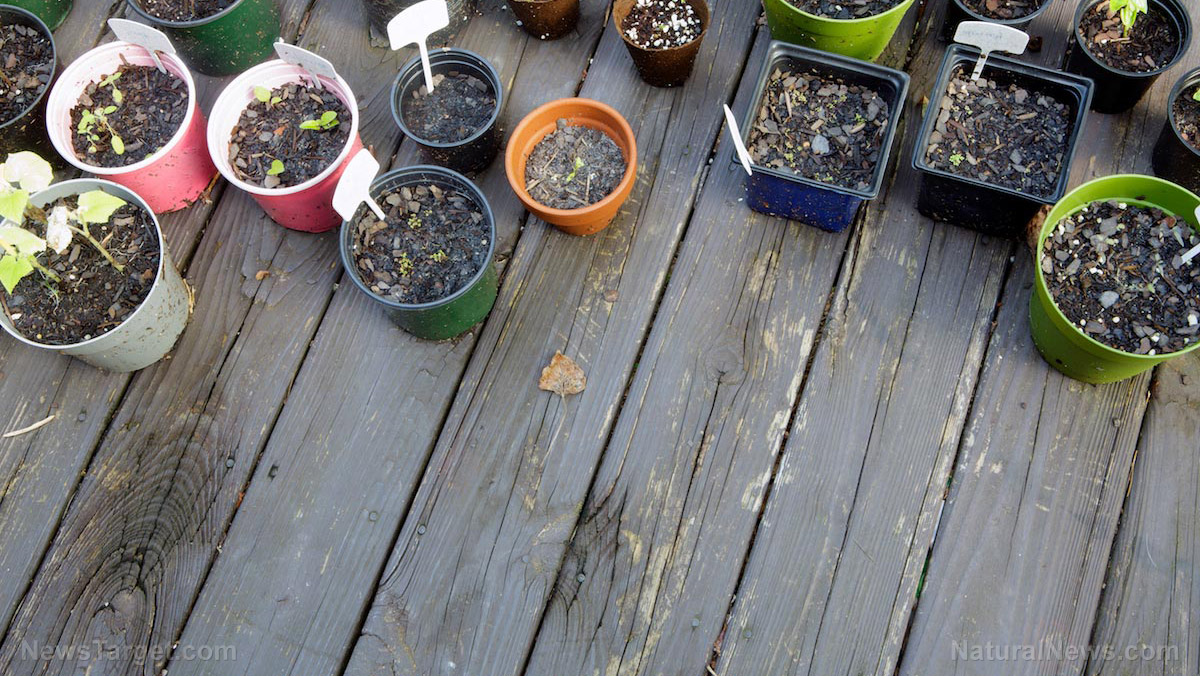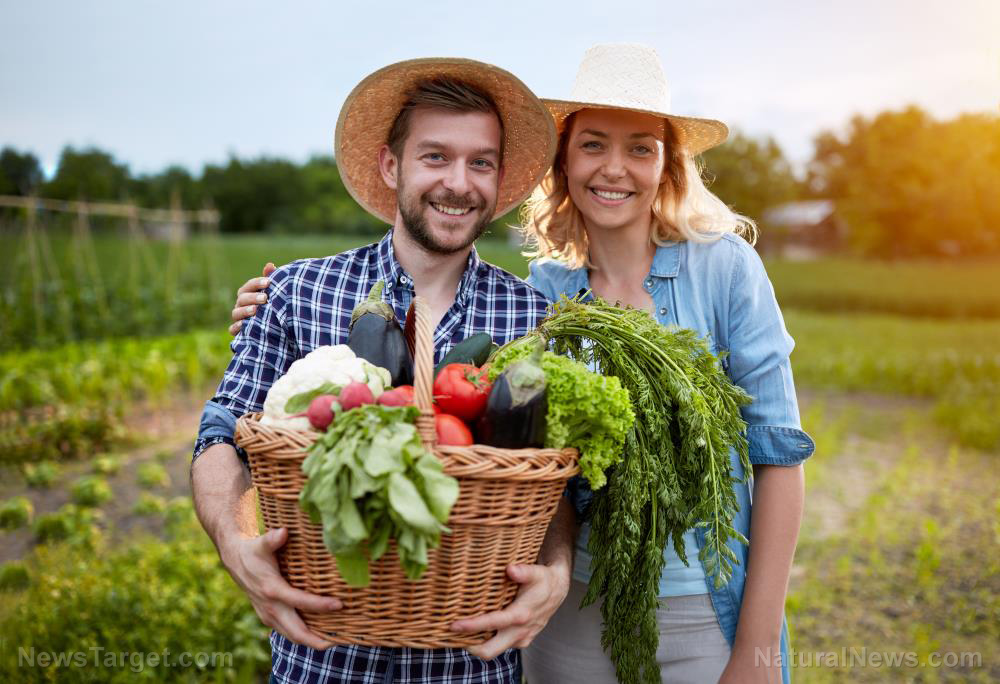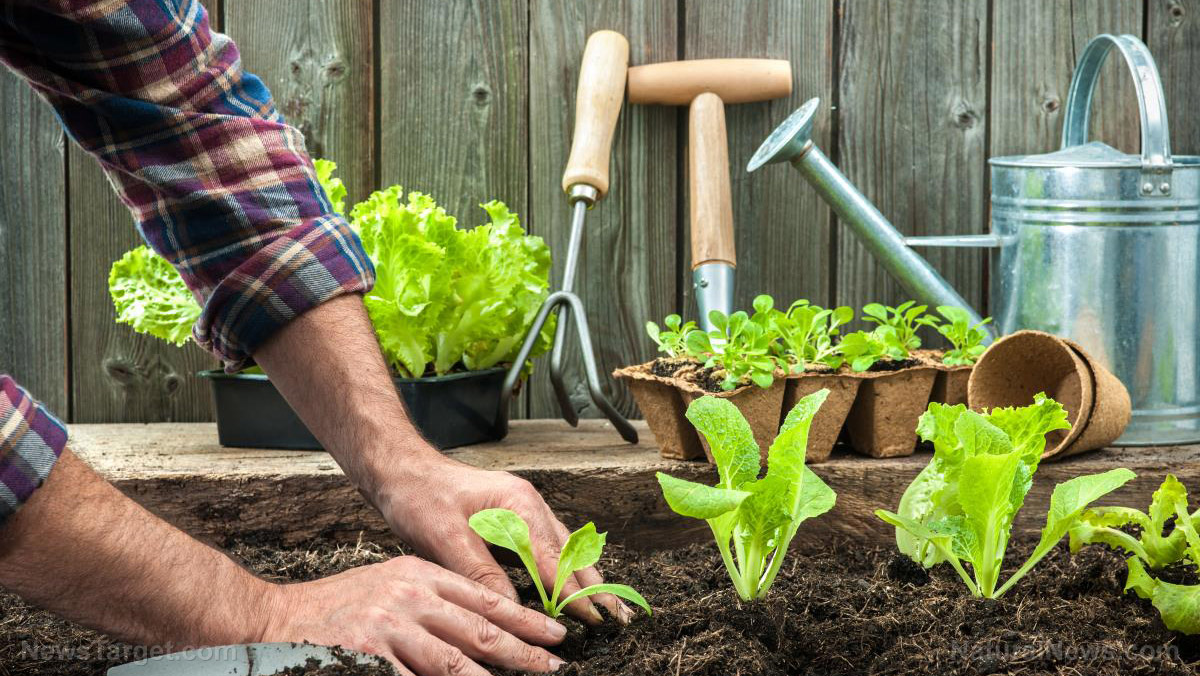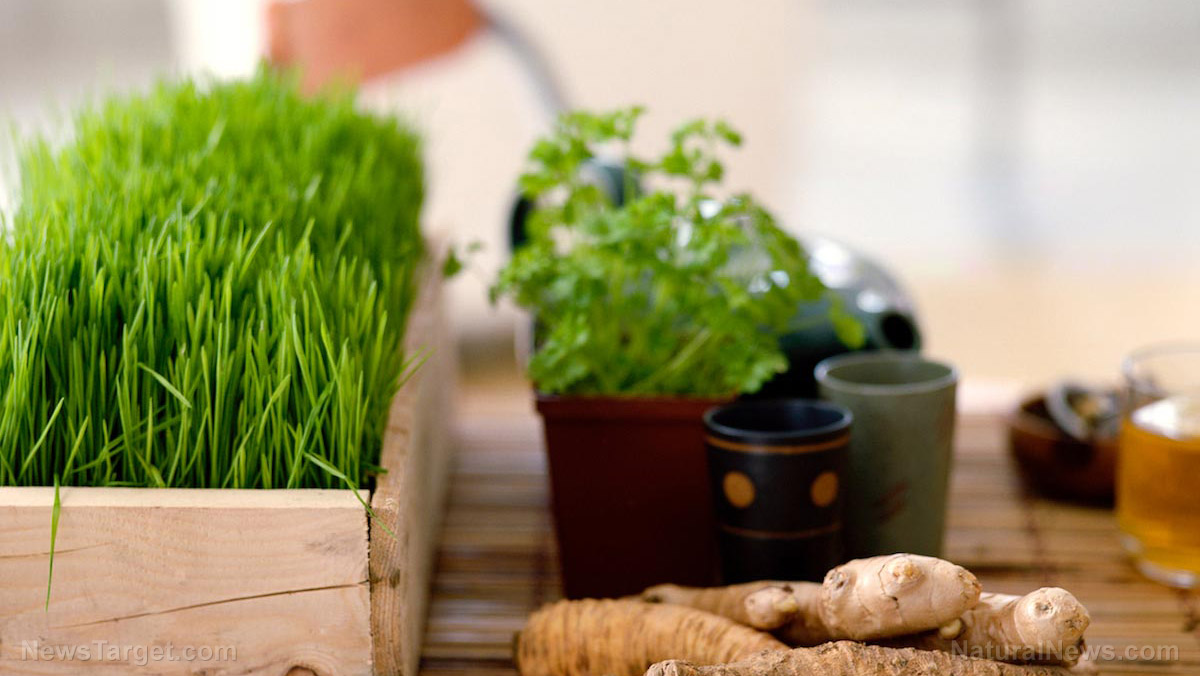The revolution is in your back yard: Become self-sufficient and start a home garden
10/01/2019 / By Edsel Cook

Everyone should aim to attain self-sufficiency, especially when it comes to food. Planting a garden at your home is one of the best ways to start down the road toward food independence.
Residents of suburban areas may start by turning their front yard and backyard into vegetable gardens. Combine square foot gardening and vertical gardens to get the most use out of limited space.
To increase the fertility of the soil, adopt raised bed gardening techniques. For people who live in states with winter season, build cold frames and greenhouses to grow more than one crop every year.
Urban dwellers may fit hanging baskets and a container garden within a sunny balcony. Line similarly bright windowsills with potted herbs and small food plants.
A spare room may fit hydroponics, aquaponics, or even a greenhouse for growing food all year. There may also be a nearby community garden run by independent-minded people.
Homesteaders in the countryside have the time and space to grow fields of grains and vegetables. They may also cultivate herbs for cooking and medicinal uses.
Study composting, cover crops, natural amendments, and other traditional farming methods. And if a forest happens to be nearby, try foraging for food. (Related: FARMacy: Gardening does wonders for your mood.)
Livestock, seed saving, and organic farming
Raising micro-livestock will help cover part of the protein requirement of a healthy diet. For people who have the room and resources to do so, try raising chickens, miniature goats, and rabbits.
These livestock animals will provide dairy, eggs, and meat. In turn, take good care of them. Give them the freedom to roam large spaces and access to natural sources of food and water.
Set aside some seeds from each crop and save them for the future. Learn how to harvest and store every type in the inventory.
Practice organic methods of farming. Design the food garden or field to attract bees, butterflies, and other natural pollinators.
Use compost, manure, and other natural ways to enrich the soil. Look for plants and local insects that may deal with any pests.
Avoid any artificial chemical fertilizers, herbicides, and pesticides. Don’t use any genetically modified organism (GMO).
Study the local laws to determine what is allowed by the municipal government. As much as possible, work within that legal framework. Barring that, know the rights given by the Constitution and stand by those rights.
Learn how to preserve the food you harvested
Take up permaculture to help improve the food garden or crop fields. Plant berry bushes and trees that bear fruits or nuts in the yard. They will provide shade and a steady supply of food.
The permaculture technique called espaliering will prove vital to raising fruit trees in small spaces. Learn how to get dwarf fruit trees to grow in the shape and size permitted by the yard.
Most people will not have space and time to grow everything they need. In case you need to buy something, you must get it from local sources. Doing so supports agriculture in the region and helps keep local farms solvent.
Support farmer’s markets and roadside stands that sell their own produce. Get shares in a Community Supported Agriculture (CSA) or hook up with a farming cooperative.
Last but not least, find out how to preserve the produce harvested from the food gardens. All the effort invested in producing fruits, veggies, and animal products will go to waste if there is no way to preserve them for long periods.
Traditional food preservation techniques include canning, dehydrating, and root cellars. These simple methods will keep the food safe and edible for months or years without using electricity.
Sources include:
Tagged Under: food collapse, food freedom, food independence, Food Preservation, food security, Food storage, food supply, gardening, green living, harvest, home gardening, homesteading, livestock and poultry, organic farming, organics, preparedness, prepper, prepping, seed saving, starvation, sustainable living, urban prepping, vegetable garden
RECENT NEWS & ARTICLES
Homesteading.News is a fact-based public education website published by Homesteading News Features, LLC.
All content copyright © 2018 by Homesteading News Features, LLC.
Contact Us with Tips or Corrections
All trademarks, registered trademarks and servicemarks mentioned on this site are the property of their respective owners.





